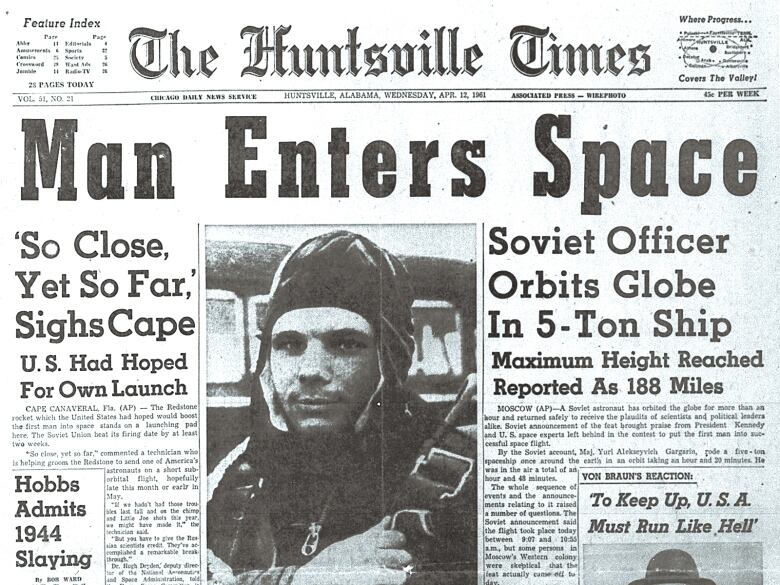First-ever study analyzing 'space culture' underway
UBC sociology professor leads study of astronauts onboard the International Space Station

In space, no one can hear you scream unless you're cheering for your favourite hockey team.
Life on the International Space Station (ISS) bears a lot of similarities to life on Earth. There's Wi-Fi, cable, and even Halloween costume parties.It's all meant to help astronauts feel at home while they're floating 400 kilometres above sea level.
But for the first time, Canadian researchers are examining how rocket men and women adapt to life in the cosmos during long-term space missions and it could have wider implications for space travel beyond the moon.
"We're looking at how astronauts from a variety of cultures and nationalities live togetheron the space stationand possibly create a shared culture," said Dr. Phyllis Johnson, a UBC-based researcher andprincipalinvestigator of the study.
"Aspace culture might develop."
Welcome to the spookiest space station. Spiderman has no problem scaling the walls in space. Happy Halloween pic.twitter.com/V7JXKsbjxl
—@Space_StationAt Home in Space
The projectis called At Home in Space, and it's billed as the first ever psychosocial study of astronauts on the International Space Station.
Researchers aim to figure out how astronauts make themselves feelat home while aboard the space station, and uncover the cultural norms that emerge within the confines of an isolatedspacecraft.
"We're also interested in seeing how living in space has changed their particular lives," said Johnson.
Astronauts completea series of questionnaires before, during and after their months-long stay in the great beyond, and are also encouraged to take photos that accurately depict 'life in space'.
.@Astro_Paolo s Spidey-sense is definitely tingling as he perches on the ceiling of the @Space_Station Russian segment Service Module. pic.twitter.com/SGm5iDyfvS
—@AstroKomradeSpace culture
Johnson expects that a unique 'space culture' might exist on the space station a way of life that many astronauts come to identify with during their time in orbit.
"Maybe there are things like space traditions that are important to them," said Johnson.
Johnson points toYuri Gagarin Day,an annual celebrationheld on theISSevery April 12 that honoursthe first manned trip to outer space, as a notable cultural event that's unique toastronauts.

"They could have space traditions that they celebrate. Do they mount mission patches? Change of command ceremonies? Those would be certain kinds of things that would relate to space but we don't know how important they are to them."
Long-term implications
Johnson says understanding how astronauts adjust to the new living environment could be the key to planning for longer-term manned missions like the seemingly inevitable voyage to Mars.
"How are they adjusting to this new environment? How do people cope with potential isolation? How do they make it interesting in their lives? How do they keep carrying out their work, and enjoying their work?"
NASA currently plans on sending humans to Mars in the 2030s. The journey would take years for travellers, with very limited contact to the outside world.
Johnson hopes the results of her study could enhance travel conditions for those voyagers.
"If you're going to to go somewhere and be somewhere for a long period of time, and not have as much contact with your normal experiences on Earth, then we need to know how people do it, and what makes it a good experience for them."
Researchers hope to complete the study by 2020.













_(720p).jpg)


 OFFICIAL HD MUSIC VIDEO.jpg)
.jpg)



























































































